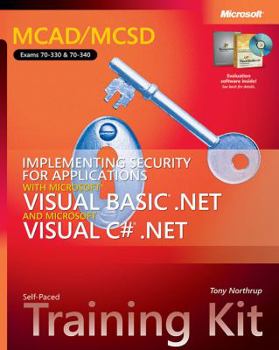MCAD/MCSD Self-Paced Training Kit: Implementing Security for Applications with Microsoft Visual Basic .NET and Microsoft Visual C# .NET (Pro-Certification)
Select Format
Select Condition 
Book Overview
Get in-depth preparation for Exams 70-330 and 70-340, two new security-focused electives for MCAD and MCSD certification, as you advance your expertise with Visual Basic .Net and Visual C# .Net. Focusing on security implementation for applications, this official study guide covers developing applications using best practice. This description may be from another edition of this product.
Format:Paperback
Language:English
ISBN:0735621217
ISBN13:9780735621213
Release Date:September 2004
Publisher:Microsoft Press
Length:640 Pages
Weight:3.20 lbs.
Dimensions:1.9" x 7.6" x 9.4"
More by Xiaojun Wang
Customer Reviews
5 customer ratings | 5 reviews
There are currently no reviews. Be the first to review this work.





























